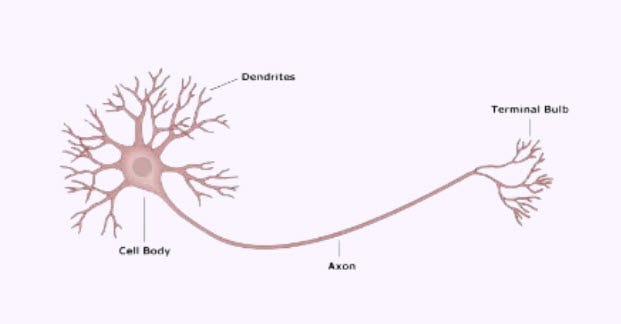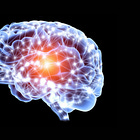Exploring Neuroplasticity
Your brain is always listening & always ready to change
Most of us know that the brain is not a fixed entity.
Neuroplasticity has entered everyday vocabulary, informing us that our brains change and adapt across the course of life. But beneath this familiar term lies a deeper question: what does it really mean for the brain to be so responsive?
Every experience we live through (learning a skill, recovering from injury, enduring stress, or finding calm) leaves its trace in the networks of the brain. Connections can strengthen or weaken, pathways can be reshaped, new growth can emerge.
I like to say that the brain is always listening. And this simply means it is adjusting its circuitry in ways that are both remarkable and, at times, risky.
Today I’m taking a quick look at the science of neuroplasticity: what it is, how it works, where it helps, and where it can go astray.
The Many Faces of Neuroplasticity
Structural
When we talk about neuroplasticity, we are not pointing to a single process but to several ways the brain can adapt. One version of this adaptability is structural plasticity. This refers to changes in the very architecture of the brain, including the growth of new dendrites, the formation of synapses, and shifts in grey and white matter volume. These changes can be seen when someone learns a new language or practises an instrument for years. The physical fabric of the brain adjusts to accommodate the new skill.

Functional
Another version is functional plasticity. Here, the emphasis is on the activity of networks rather than their physical structure. Functional plasticity means that the brain can change how areas communicate with each other. When one network strengthens its connections or coordinates differently with another, new patterns of processing emerge. For example, in people who lose their sight, the visual cortex can begin to respond to sound or touch, showing how unused regions can be recruited to support other senses.
Compensatory
A third form is compensatory plasticity. This comes into play when injury disrupts normal function. Rather than simply regrowing connections, the brain assigns tasks to other areas, often far from the original site.
After a stroke, for instance, regions in the opposite hemisphere may take over language1 or motor functions, allowing some recovery of speech or movement. This is not just rebuilding what was lost but rerouting activity through new pathways.
Still, to understand plasticity fully, we need to look at what drives these changes in the first place!
Factors that Drive Plasticity
If neuroplasticity is the capacity for change, then experience is its sculptor.
Each time we practise something new, whether it is memorising a complex chess opening or training our balance on a surfboard, connections adjust to make the next attempt a little easier.
The brain is tuned by what we return to.
Our surroundings also leave their imprint. A home filled with positive interactions and stimulation has a different effect on neural growth than one marked by neglect or monotony.
In this sense, the richness of daily life seeps into the very fabric of the brain.
Movement adds another layer to this. Aerobic exercise stimulates the release of growth factors such as BDNF, which support the birth of new neurons in the hippocampus, a region central to memory. What begins in the muscles resonates in neural tissue.
But brain plasticity does not distinguish between what helps and what harms!
You see, chronic stress or trauma can strengthen fear circuits just as practice strengthens productive skills. The brain adjusts itself in response to whatever it is given, whether nourishing or corrosive.
Plasticity is Not Always “Good”
The same flexibility that allows the brain to recover or learn can also trap it in patterns that cause harm. In chronic pain, repeated signals from the body can leave lasting traces in neural pathways, so that the brain continues to register pain even after the original injury has healed. What began as protection becomes a cycle of discomfort that is hard to break.
Addiction tells a similar story.
There are chemicals that (due to their highly rewarding properties), take hold of the brain’s learning systems, reinforcing circuits that drive craving and compulsive use. Instead of strengthening skills or memories, plasticity strengthens the urge to repeat behaviours that undermine health. Fear circuits can also be shaped in this way.
Traumatic experiences may also carve deep grooves in neural pathways, making hypervigilance or intrusive memories hard to extinguish.
Plasticity, then, is a double-edged capacity.
The brain’s readiness to change is what enables growth, but it is also what allows suffering to take root. As Aristotle observed, we are what we repeatedly do. The habits we choose to cultivate, and the decisions we return to, are the very forces that shape the pathways of the brain, for harm or for healing.
Directing Neuroplasticity Toward Growth
If plasticity can reinforce harmful patterns, it can also be guided toward recovery and growth. Research in cognitive rehabilitation shows that structured practice can help people regain lost functions after brain injury.
Studies of neurogenesis reveal that new neurons can emerge in adulthood, especially in the hippocampus. And techniques such as transcranial magnetic stimulation demonstrate how targeted interventions can redirect brain activity to improve mood or cognition.
Yet the greatest influence comes not from machines or laboratories, but from the choices we repeat each day. The thoughts we hold onto, the ways we respond to stress, the habits we nurture.
These are the raw material that the brain reshapes itself around.
Even something as simple as practising calm in a moment of conflict can strengthen new pathways, making it easier to choose that response again.
Science shows what is possible, but it is daily life that gives plasticity its direction.
Concluding Thoughts
I like to think of neuroplasticity as evidence that our brains are always in conversation with our lives.
The science can feel distant until we realise it is happening in every choice, every reaction, every habit we allow to take root.
If the brain is always listening, then the question is: what do we want it to hear?
Reference List:
Gazerani, P. (2025). The neuroplastic brain: Current breakthroughs and emerging frontiers. Brain Research, 1858, 149643. https://doi.org/10.1016/j.brainres.2025.149643
Language functions are usually lateralised to the left hemisphere in right-handed individuals (and many left-handers too). After a stroke, however, areas in the right hemisphere can sometimes compensate, supporting partial recovery of speech.







Neuroplasticity is a true game changer for me!!!!! 🏆 💪🏼 🧠
I am sooooo glad that you also share the amazing topic 🥇
https://substack.com/@calmfeed/note/c-175935590?r=3pxs62&utm_medium=ios
Great article. I also write on this subject and to hear what you think of my work: https://open.substack.com/pub/philhulbig/p/neuroplasticity?r=1yqkhf&utm_medium=ios